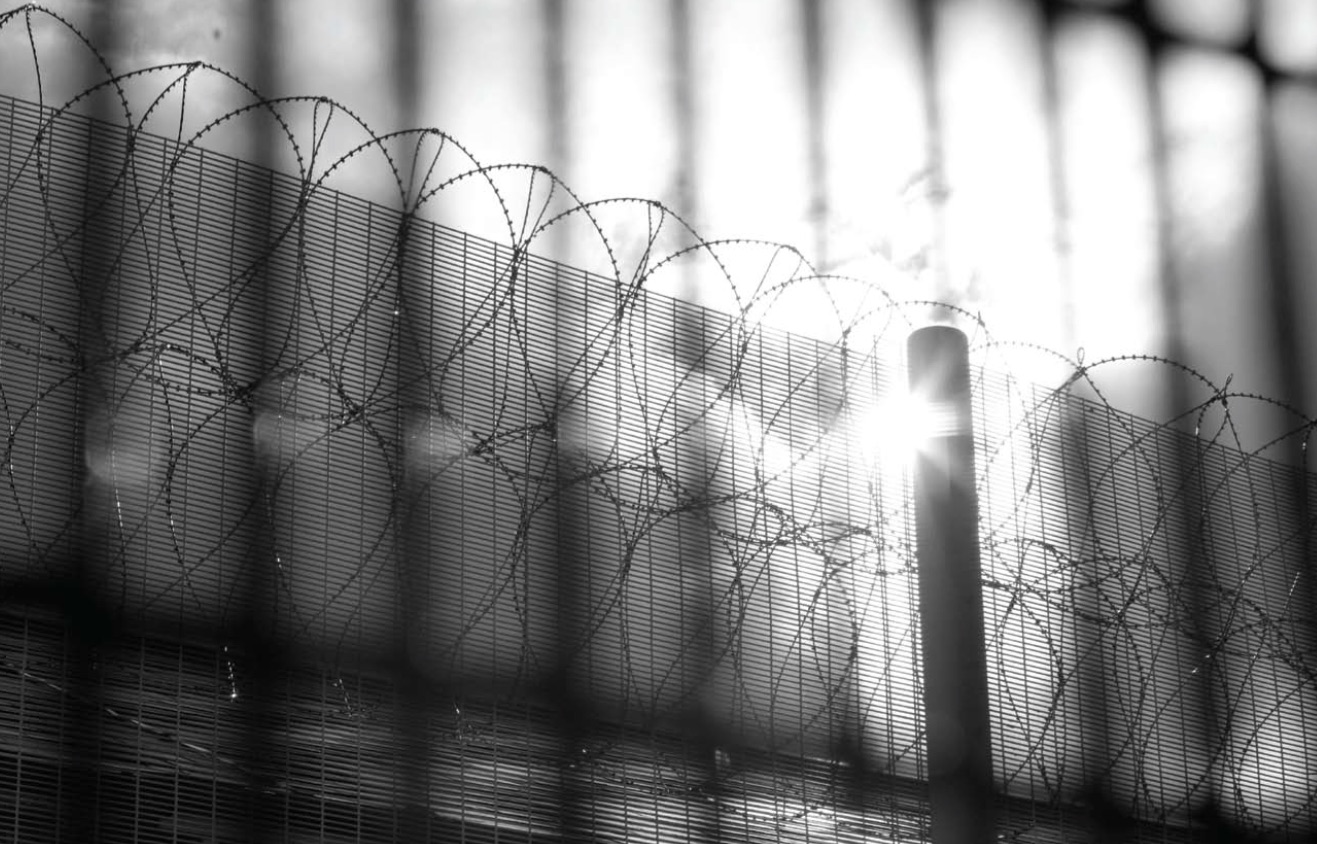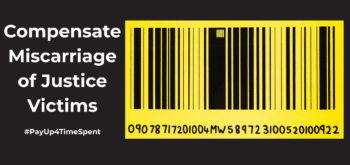[contextly_auto_sidebar]

Sketches by Isobel Williams from Proof magazine
The Criminal Cases Review Commission (CCRC) was set up in 1997; since then, standards in the UK’s criminal justice system have declined sharply.
Is the latter observation anything to do with the former? Even, perhaps, a direct consequence? In other words, is that sentence a sequitur or a non sequitur?
Since its inception, the CCRC has referred hundreds of convictions to appeal, a significant proportion of which have been overturned. The vast majority of these would not have been referred under the pre-existing system of internal inquiries at the Home Office. A logical conclusion would therefore appear to be that the creation of the CCRC has been a resounding success.
- This essay features in Proof magazine Justice in a time of moral panic – order here
A court of last resort
However, a number of pressing considerations must be factored in to this ostensibly rosy picture. Firstly, it was never meant to be like this. The idea, as originally conceived in the late 1970s by Tom Sargant, the secretary of Justice, was for there to be a Court of Last Resort to pronounce upon once-in-a-blue-moon intractable cases.
The two most notable of that time were the 1967 Stafford-Luvaglio case (the murder of Angus Sibbett) and the 1969 Luton Post-Office case (the murder of Reginald Stevens). The Court of Appeal turned down the Luton case on five occasions and finally remedied it at the sixth time of asking in 2003, by which time the two wrongly-imprisoned men, Michael McMahon and David Cooper, had both died. That the case was rectified at all (after a CCRC reference) was entirely owing to the doggedness of the lawyer Gareth Peirce.
There were the two outstanding causes célèbres of their time. A court of last resort would, it was believed, deal with such relatively rare egregious cases.
It was never envisaged by anyone that there should be a situation like the one we have now ended up with, in which a permanent body dissects the entrails of thousands of cases, all of which ought to have been properly and exhaustively investigated before trial.
The most obvious problem with the CCRC is that it institutionalises miscarriages of justice. It is as though we have created a situation in which the authorities can afford not only to be complacent about the judicial system’s failings, but can even exacerbate them; the CCRC will be there to clear up the resulting mess.
Let’s suppose that the CCRC is indeed 100% effective in making good all the mistakes. Even if this were the situation, the government’s abdication of responsibility for the system itself would still be unpardonable.
This is because of the repercussions of getting it wrong in the first place. Cases that go awry in the criminal justice processes are catastrophic in three respects: firstly, for the wrongly convicted and their families, because the stigma of wrongful conviction is a heavy one to bear.
Nearly everyone who has been mistakenly convicted is psychologically damaged by wrongful imprisonment. The physical well-being of many will also have been seriously and often irremediably compromised. The Guildford 4 case is one of the most resonant of all miscarriages of justice; it is profoundly upsetting to reflect that two of those four have already died at an early age.
Wrongful convictions are also catastrophic for the bereaved and victims who must endure not merely the effects of the original crime but must suffer the additional ill-treatment of having the wool pulled over their eyes. Further, the cost to the public purse is immense. Cases that should never have been brought to trial in the first place end up costing millions and millions. All subsequent judicial and penal developments are predicated on the basis that the original decision was correct. Therefore, if there has been error, it is compounded over and over.
Ultimately vast sums of public money are wasted; grievous situations are not addressed but perpetuated. Former major Charles Ingram, who was wrongly convicted in the Who Wants To Be A Millionaire? case, has to date attended 31 separate court hearings – and yet, in judicial terms, the case is still far from being resolved.
The ramifications of the Cardiff 3 case, concerning the murder of Lynette White in February 1988, persist to this day. On February 26 2015 – almost exactly 27 years after the murder – Home Secretary Theresa May set up a fresh investigation into the collapse of a police corruption trial concerning the original murder inquiry.
Success or failure
So the ‘success’ level of the CCRC, even if we take that at face value, is actually a measure of repeated judicial failure.
These reservations would apply even if the CCRC expertly identified and expeditiously dealt with all the cases of miscarriage that came before it. However, no one suggests that that is the case. From this perspective – comparing the number of cases that are referred with the number that ought to be referred – the CCRC’s failure rate is actually very high.
 Hundreds of cases could be cited to exemplify this. Here are just two. Andrew Malkinson, who had actually left the country in 1990, returned to the UK for a few weeks and was visiting his mother when he was arrested in 2003. He was then convicted of a double rape and has been in prison ever since.
Hundreds of cases could be cited to exemplify this. Here are just two. Andrew Malkinson, who had actually left the country in 1990, returned to the UK for a few weeks and was visiting his mother when he was arrested in 2003. He was then convicted of a double rape and has been in prison ever since.
The facts of the case are these: although the incident occurred on one of the hottest nights of the year, and although the victim reported it straight away, there were no transferences from him or her or from her to him – there was nothing scientifically to link assailant and victim; the Crown forensic scientist misled the court at trial and misled the judge, who himself referred the case to appeal, after the trial; Malkinson didn’t fit the description of the assailant; the victim said she had scratched the face of her assailant (‘a deep scratch’) but Malkinson’s face was unmarked; a video identification parade was held at one o’clock in the morning in circumstances that the duty solicitor found troubling; one of the witnesses identified a parade stooge but subsequently ‘identified’ Malkinson – and, again, her change of evidence is highly suspect.
Jong Rhee was convicted in 1998 of causing a fire in which his wife died. The prosecution asked one of the country’s leading fire experts for a report. He concluded there was no evidence of arson. So the prosecution instead turned to someone who was not a fire expert and commissioned a report from him, and then based its case on his conclusions. Genuine fire experts, in the years since, have described his analysis as ‘simply wrong’. This man, the real fire experts added, was ‘dangerous in the criminal courts’. Further, the police investigation contained multiple breaches of Home Office guidelines for the investigation of fires.
In my own view, these particular cases are a litmus test. If the CCRC is not referring these, then it is simply not fulfilling the role that the public expect of it. It has rejected not only these two, but hundreds of other wrongful convictions.
According to recent figures (February 2015) from the Howard League, 3,620 prisoners have passed their tariff expiry date. The primary reason why those who have passed their date for release remain imprisoned is that they have not ‘come to terms’ with their crime. The primary reason for that is that they are still protesting their innocence. The primary reason for that is that, in all probability, they are innocent.
Even the Stafford-Luvaglio case, that cause célèbre from the 1960s, remains unremedied; despite a recent submission containing powerful new evidence, the CCRC has failed to refer it to appeal.
An additional criticism of the CCRC is that, even when it reaches correct decisions, it takes an eternity to do so. This is critical bearing in mind the lasting harm, previously alluded to, caused by wrongful imprisonment. Lives are certainly being lost. In January 2010, Gordon Park, wrongly convicted in the Coniston Water ‘lady in the lake’ case, committed suicide after his appeal was turned down, believing that no end to his and his family’s suffering was in sight.
It is instructive to compare past Home Office inquiries with ones now being conducted by the CCRC. The Guildford 4 case was regarded at the time as particularly intractable because of what was held to be the ‘political’ dimension. In fact, the first broadcast of unease, via a television documentary, was in 1985; the appeals were then quashed in 1989. So, under the Home Office system, there was a four-year gap.
The case of Sam Kulasingham and Prem Sivalingham effectively began in February 1992, after the dismissal of the men’s original appeal. After expressions of public concern, the Home Office intervened and the convictions were quashed in May 1994: just over a two-year gap.
 Compare that with what can happen today. Eddie Gilfoyle was wrongly convicted in July 1993 and his case has attracted intermittent publicity ever since.
Compare that with what can happen today. Eddie Gilfoyle was wrongly convicted in July 1993 and his case has attracted intermittent publicity ever since.
Merely the most recent cycle of publicity about his wrongful conviction can be traced back to February 2008, when The Times published a major article. More than seven years later, the CCRC has still not pronounced upon the case.
To these reservations should be added the critical one: the alarming possibility that the mere existence of the CCRC has led to an increased number of miscarriages of justice. There are two respects in which this may have happened.
Firstly, the existence of the CCRC, brought into being by the Criminal Appeal Act 1995, has served to allay what might otherwise have been serious administrative anxieties about a poorly-performing criminal justice system.
The fact that the country had a problem with miscarriages of justice was clear virtually throughout the post-war period, and was then spectacularly highlighted from the mid-1980s with the cluster of “Irish” cases (the Birmingham 6, Guildford 4, Maguire family, Judith Ward, et al). Even so, only one measure was brought in as a result to try to prevent miscarriages. This was the disclosure provisions brought in by the judiciary in response to the Ward case.
This solitary improvement was then overturned by parliament.
So, despite the longstanding concern, nothing at all was done to prevent miscarriages of justice. It seems as if the mere creation of the CCRC was sufficient to release the political and judicial authorities from any obligation even to attempt to remedy a demonstrably defective criminal justice system.
Now, the potential for wrongful convictions has significantly increased. Legislation that may not previously have been contemplated has now been passed; and all of it has given the prosecution significant advantages over the defence.
Three areas in particular can be highlighted. Prosecution ambush evidence is now frequently deployed in cases. This has been made possible by the Criminal Procedure and Investigations Act 1996 (the act that replaced the judiciary’s disclosure provisions). Changes were brought in through the Criminal Justice Act 2003 to give the prosecution further advantages. These included, notably, the admissibility of hearsay and of anonymous evidence. Changes to jury selection were also introduced so that police officers in England and Wales became eligible to sit on juries. This destroyed the essential element of objectivity in jury composition.
Similarly, it is important to consider whether the existence of the CCRC itself may have inclined juries to bring in guilty verdicts where previously they would have been hung (or, undecided) or would have acquitted.
A false sense of security
Obviously, we do not know what goes on inside jury rooms and we are prohibited from finding out. But three points can be made.
Firstly, judges in England and Wales resisted the introduction of a Court of Appeal in 1907. At that time they argued that, were it to happen, jurors would be less rigorous than hitherto in reaching verdicts because the mantle of ultimate responsibility would have passed from them. Whatever weight this may have had at the time, it would obviously have far greater weight in circumstances where there are two post-trial bodies to act as theoretical safeguards.
Secondly, the conviction rate in murder cases was about 45% at the start of the 1960s. By the end of the decade, it was over 90%. What had changed in the interim was, of course, the abolition of capital punishment. This appears to demonstrate that juries will bring in guilty verdicts more readily when they know their decisions are not going to be irreversible.
Thirdly, although we do not know the thinking of juries, what can definitely be said is this: there appears to be no understanding among the general public that overturning wrongful convictions through the appeal system is as enormously difficult, and as protracted, a process as it actually is.
It therefore seems that, just as parliament may have passed legislation in the comforting knowledge that they had already set up a safety mechanism, so jurors may be bringing in convictions in the expectation that there is effective remedy for any potential error of theirs.
This lulled-into-a-false-sense-of-security point applies, above all, to the wrongly convicted themselves. Many are given false hope by the apparatus of an apparently secure appeals process. Only much later, five years or so down the line, do they discover that it is illusion not reality; only then do they become really fearful – by which time case documents and exhibits will already be disappearing.
Certainly, the CCRC has been stymied from the outset by its subordinate relationship to the Court of Appeal. Its statutory duty is to refer cases that are likely to succeed at the appeal court. It follows, therefore, that if there is a period when appeal court judges are being especially stubborn – and that is certainly how many would view them at the present time – then the CCRC could not refer certain cases, irrespective of how meritorious it may consider them.
To this in-built problem a further two complications have been added. The first arose as a result of Lord Bingham’s judgment in the Pendleton case in 2001 (R v Pendleton [2001] UKHL 66; [2001] 1 Cr App R 34), and the resulting expectation that the appeal court would send cases for retrial much more frequently than they had been accustomed to do.
So, firstly, this introduced even greater delay into an already marathon appeals procedure. From now on, a case would be mothballed for several years while the CCRC considered it, then (even if it was successful in being referred) would wait another year to be heard at appeal, and after that a further year for the retrial to begin.
More importantly, resolution-by-retrial introduced an intellectual illogicality into the process. The CCRC would have studied the case at length and seen vastly more evidence than the original jury ever did. At the end of that process, they had concluded that there were doubts surrounding the conviction. So why then, knowing the case is destined for retrial, is the Court of Appeal involved at all? It is now redundant. In these circumstances, any referral by the CCRC should simply lead to a formal ten-minute hearing at the appeal court so that the conviction can be quashed, the applicant bailed and the case sent for retrial.
It is interesting to note that, for many of those wrongly convicted, it would not now be possible to hold a retrial. The Jong Rhee case, for example – notwithstanding the CCRC’s inexcusable failure to act upon it – has already crumbled to such an extent that the prosecution could not now construct bricks without straw; a case for retrial could not be assembled.
The next complication was the extraordinary change in the law that restricted the grounds of appeal to those identified by the CCRC. This change was introduced, literally in the last hour of the criminal justice bill’s passage through parliament, by two law lords who ought to have known better.
The CCRC has no formal relationship with the applicant and so it is inappropriate for it to set down grounds of appeal. The applicant’s legal team are the ones who bear professional responsibility for the way the case is handled at appeal.
Secondly, the change merely exacerbated a longstanding problem with the trial and appeal process that Lord Devlin had lucidly identified in the 1980s. This was that, in contentious cases, no one tribunal hears all the evidence; bits of a case were heard in one forum, and other bits in a different forum. Nowhere was the case as a whole being heard. That still applies today, and this change in the law – which, I believe, the CCRC should have refused to countenance – merely ensured a continuation of this intellectually incoherent process with hearings being narrowly focused and justice never served.
So there has been a spiralling of criminal justice calamities over the past 30 years; where there was once the occasional case, there is now a plethora. It is vital that the CCRC should be scrapped at the earliest opportunity. That may seem counter-intuitive, but the UK’s criminal justice system has deteriorated significantly during the time the CCRC has been in existence.
Clearly abolition cannot happen straight away so, in the short term, a way must be found of enabling the CCRC to function as parliament originally intended that it should.
It seems to me that the only suitable test for the CCRC to apply is for commissioners to ask themselves whether, if they were constituted as a jury, they would bring in a verdict of guilty. If the answer is ‘No’, then the case plainly does not reach the requisite level of judicial safety. In consequence, it should be referred back.
In the same way that UK juries do not give reason for their verdicts, nor should the CCRC. Perhaps a formal two-page letter outlining the areas in which the prosecution case was deficient would suffice. This would speed up the process by about 12 months and would allow the case to be taken over by those who bear actual responsibility for it, the applicant’s legal team.
This would require some minor legislative amendment. But, in its wake, parliament could then address the only question that matters, which is how to ensure the trial process functions efficaciously at first instance.







